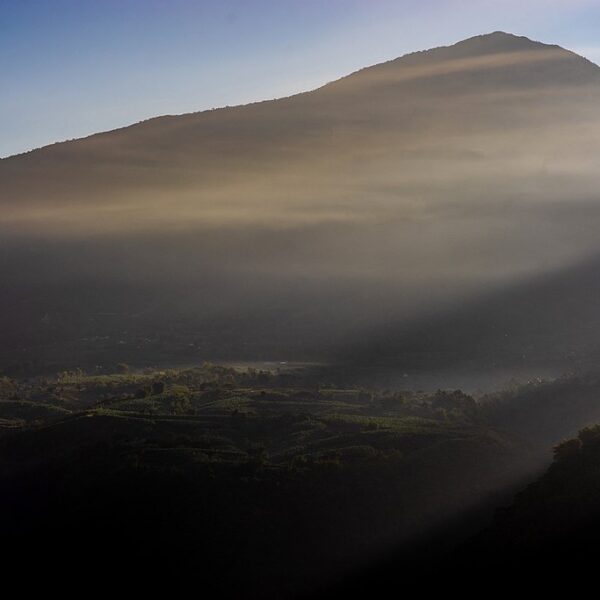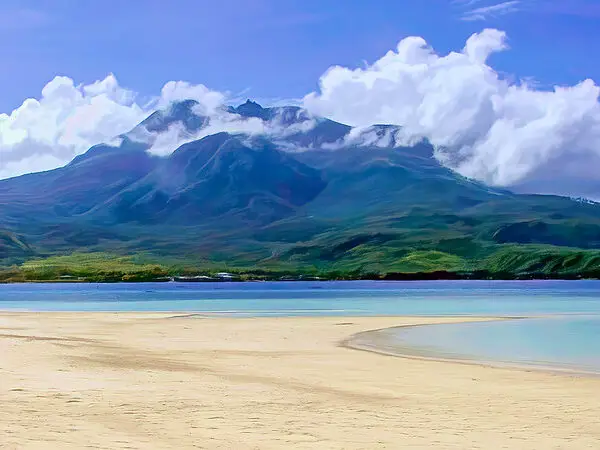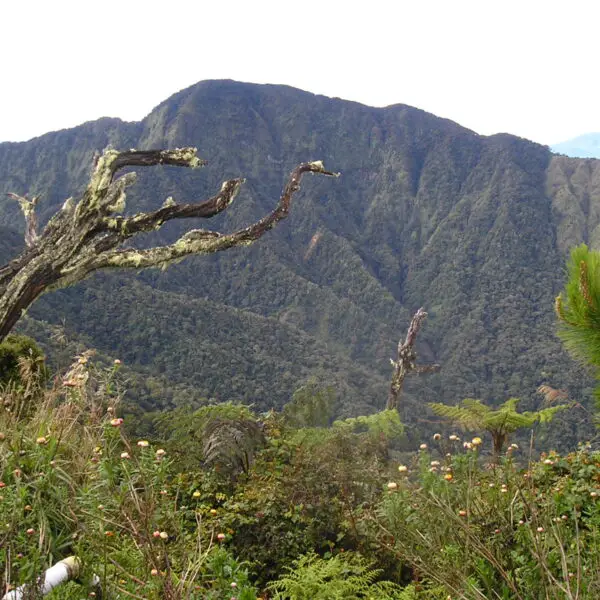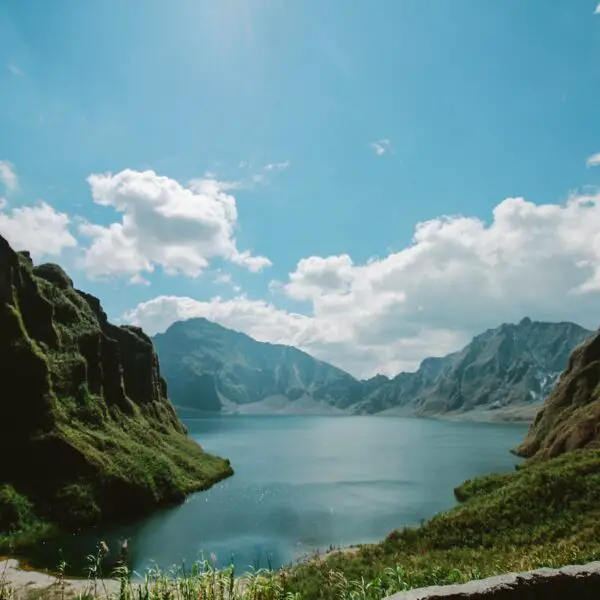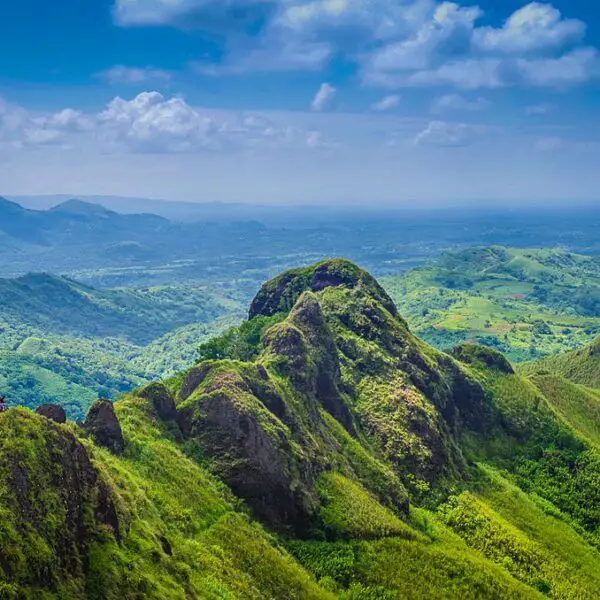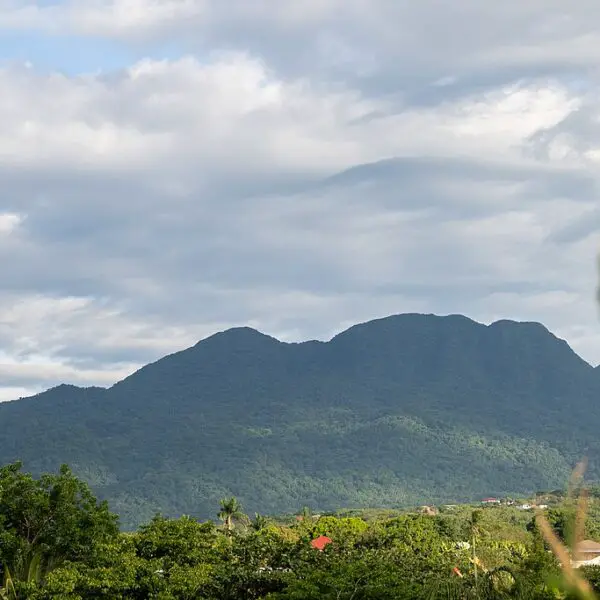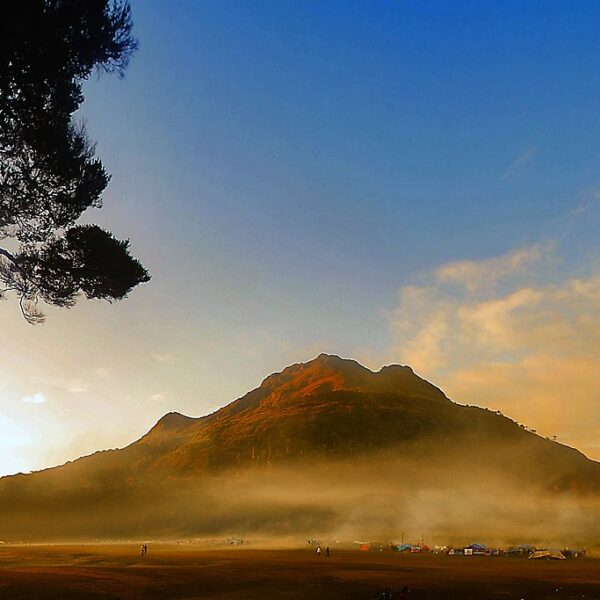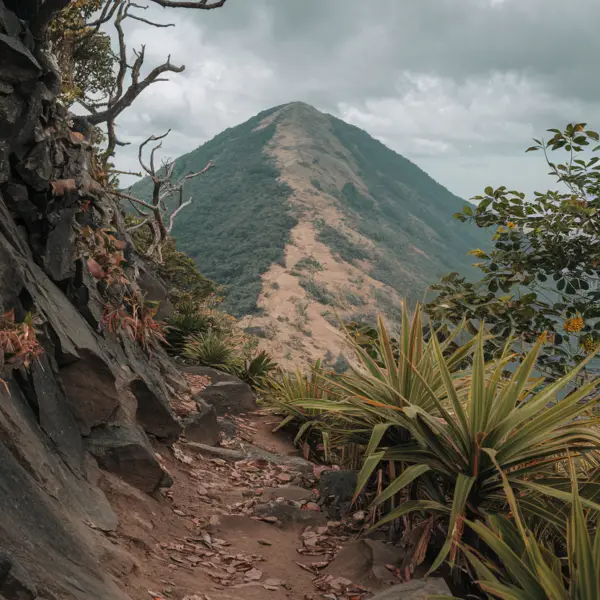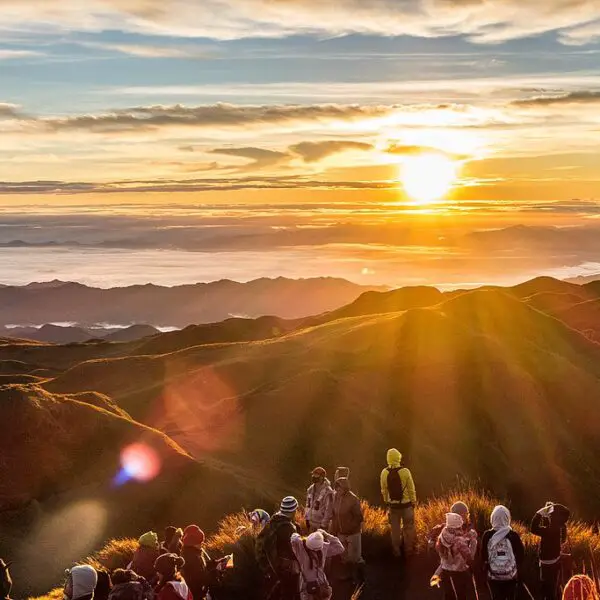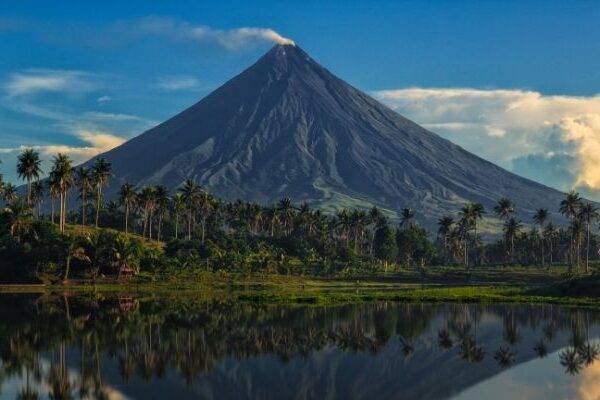Embark on an unforgettable journey to Mount Minandar and immerse yourself in the breathtaking beauty of this natural wonder. Nestled in Maguindanao, Philippines, Mount Minandar offers stunning scenic views and is a haven for outdoor enthusiasts seeking adventure activities.
Key Takeaways:
- Mount Minandar is located in Maguindanao, Philippines, and is known for its majestic beauty.
- The mountain offers panoramic views, beautiful sunsets, and rolling hills covered in cogon grass.
- It is a popular destination for hikers and nature enthusiasts.
- Hiking to the summit takes approximately an hour and offers views of Bongo Island and Illana Bay.
- Mount Minandar is home to a variety of bird species, including eagles.
Mount Minandar: The Highest Peak in the Region
Standing tall as the highest peak in the region, Mount Minandar offers a captivating challenge for adventure seekers. Located in Maguindanao, Philippines, this small mountain boasts breathtaking views and is a favorite destination for outdoor enthusiasts. With its stunning sunsets and rolling hills covered in cogon grass, Mount Minandar provides a scenic backdrop for an unforgettable hiking experience.
The hike to the summit is relatively easy, taking about an hour or so. As hikers make their way up, they pass through cornfields, coconut trees, and forests of coco trees, immersing themselves in the natural beauty that surrounds them. Upon reaching the summit, a reward awaits in the form of panoramic views of Bongo Island and Illana Bay, stretching as far as the eye can see. It’s a truly awe-inspiring sight that makes the journey worthwhile.
Not only does Mount Minandar offer stunning vistas, but it is also a haven for bird enthusiasts. The mountain is home to a variety of bird species, including majestic eagles. Birdwatchers can marvel at these creatures in their natural habitat, adding another layer of wonder to the experience. Whether you’re seeking a physical challenge or simply wish to immerse yourself in nature’s beauty, a visit to Mount Minandar is sure to leave you with unforgettable memories.
| Key Features of Mount Minandar: |
|---|
| Stunning sunset views |
| Rolling hills covered in cogon grass |
| Relatively easy hike to the summit |
| Panoramic views of Bongo Island and Illana Bay |
| Diverse bird species, including eagles |
To reach Mount Minandar, one can fly to Awang Airport and then take a tricycle or habal-habal to the jump-off area. This transportation method allows for easy access to the mountain. Alternatively, Mount Minandar is also accessible by land travel from General Santos City or neighboring provinces. Overnight camping is permitted with the necessary permits, allowing adventurers to fully immerse themselves in the beauty of the mountain and its surroundings.
Experience the Beauty of Mount Minandar
With its status as the highest peak in the region, Mount Minandar offers a truly captivating adventure. Prepare to be amazed by the stunning views, lush landscapes, and diverse birdlife that make this mountain a must-visit destination for nature enthusiasts and thrill-seekers alike. Plan your journey to Mount Minandar and embark on a memorable experience in the heart of the Philippines.
A Popular Hiking Destination for Nature Enthusiasts
With its awe-inspiring landscapes and enchanting trails, Mount Minandar has become a renowned hiking destination for nature enthusiasts. Nestled in Maguindanao, Philippines, this small mountain offers stunning views and a tranquil setting that attracts outdoor lovers from near and far.
One of the highlights of hiking Mount Minandar is the opportunity to witness its beautiful sunset views. As you ascend the rolling hills covered in cogon grass, the golden hour casts a magical glow over the surroundings, creating a picturesque scene that is truly captivating.
The hike to the summit is relatively easy, taking about an hour or so. Along the trail, hikers are greeted by cornfields, coconut trees, and lush forests of coco trees. The diverse flora and fauna add to the charm of the journey, providing a delightful experience for nature enthusiasts.
Upon reaching the summit, hikers are rewarded with breathtaking panoramic views of Bongo Island and Illana Bay. The vast expanse of nature stretching out before you is a sight to behold and a testament to the beauty of Mount Minandar. It is also worth noting that the mountain is home to a variety of bird species, including eagles, making it a haven for birdwatchers.
To embark on this memorable hiking experience, travelers can fly to Awang Airport and then take a tricycle or habal-habal to the jump-off area. Additionally, Mount Minandar is easily accessible by land travel from General Santos City and neighboring provinces. The mountain offers the opportunity for overnight camping, but it is important to obtain the necessary permits to ensure a safe and responsible experience.
| Hiking Tips: |
|---|
| 1. Wear comfortable and sturdy footwear. |
| 2. Bring plenty of water and snacks to stay hydrated and energized. |
| 3. Don’t forget your camera to capture the breathtaking views. |
| 4. Respect the environment and practice Leave No Trace principles. |
Don’t Miss:
- Witnessing the stunning sunset views from Mount Minandar’s rolling hills.
- Exploring the diverse flora and fauna along the hiking trail.
- Marveling at the panoramic views of Bongo Island and Illana Bay from the summit.
- Spotting a variety of bird species, including eagles, in their natural habitat.
With its natural beauty and captivating hiking experience, Mount Minandar truly offers an unforgettable adventure for nature enthusiasts. Whether you are an avid hiker or a casual explorer, this popular hiking destination promises to immerse you in the wonders of the great outdoors.
| Essential Information: | |
|---|---|
| Location: | Maguindanao, Philippines |
| Hiking Duration: | Approximately 1 hour |
| How to Get There: | Fly to Awang Airport and take a tricycle or habal-habal to the jump-off area. Alternatively, access Mount Minandar by land travel from General Santos City or neighboring provinces. |
| Overnight Camping: | Permits are required for overnight camping. Please ensure responsible camping practices and respect for the environment. |
Scenic Views That Will Take Your Breath Away
Immerse yourself in the splendor of Mount Minandar’s panoramic vistas, where every step unveils a new breathtaking view. As you ascend the gentle slopes of this enchanting mountain, you’ll be rewarded with stunning scenes that showcase the natural beauty of the Philippines. The rolling hills, adorned with verdant cogon grass, create a picturesque landscape that seems straight out of a postcard.
Traverse the trail that winds through cornfields, coconut trees, and lush forests of coco trees, immersing yourself in the sights and sounds of nature. As you approach the summit, prepare to have your breath taken away by the sight of Bongo Island and Illana Bay stretching out before you. The expansive views from the mountaintop are nothing short of awe-inspiring, allowing you to appreciate the vastness and grandeur of the surrounding area.
Mount Minandar is a haven for bird enthusiasts, with its rich biodiversity attracting a variety of species, including majestic eagles. Keep your eyes peeled and your camera ready as you explore this mountain, as you may catch a glimpse of these magnificent creatures soaring through the clear blue skies. The symphony of birdsong that fills the air adds to the magical atmosphere, creating an unforgettable experience for nature lovers.
Whether you’re a seasoned hiker or a casual adventurer, Mount Minandar offers an unforgettable journey through its scenic wonders. Experience the joy of discovery as you embark on this outdoor escapade, enveloped by the tranquil beauty of the surroundings. Every vista presents a new opportunity to marvel at the splendor of nature and leave you with memories that will last a lifetime.
| Highlights | Activities |
|---|---|
| Stunning panoramic views | – Hiking |
| Picturesque rolling hills | – Bird watching |
| Rich biodiversity | – Camping |
| Opportunity to spot eagles | – Photography |
For those seeking an adrenaline-filled experience, Mount Minandar offers a plethora of thrilling adventure activities to satisfy your adventurous spirit. Embark on an exhilarating journey as you explore this majestic mountain and push your limits. Whether you are a seasoned adrenaline junkie or a beginner looking for an exciting challenge, Mount Minandar has something for everyone.
One of the most popular adventure activities in Mount Minandar is rock climbing. Test your strength and agility as you conquer the rugged cliffs and vertical walls of the mountain. With various difficulty levels, there are options for climbers of all abilities. Feel the rush of adrenaline as you reach new heights and take in the breathtaking views from the top.
If you prefer to stay closer to the ground, mountain biking is another thrilling activity to try. Rent a bike and navigate the twisting trails and rugged terrain, surrounded by the stunning natural beauty of Mount Minandar. Feel the wind in your hair as you speed down the slopes and maneuver through the challenging obstacles along the way.
For those who crave an aerial adventure, paragliding is a must-try activity in Mount Minandar. Soar like a bird as you glide through the air, taking in panoramic views of the surrounding landscapes. Experience the ultimate adrenaline rush as you launch from the peak of Mount Minandar and enjoy a unique perspective of the mountain and its surroundings.
To make the most of your adventure in Mount Minandar, it is recommended to book a guided tour. Experienced guides will ensure your safety and provide valuable insights into the mountain’s history and natural wonders. So gear up, embrace the thrill, and get ready for an unforgettable adventure in Mount Minandar.
| Adventure Activities in Mount Minandar | Highlights |
|---|---|
| Rock Climbing | Conquer rugged cliffs and vertical walls |
| Mountain Biking | Ride through twisting trails and rugged terrain |
| Paragliding | Glide through the air and enjoy panoramic views |
Trekking and Mountaineering in Mount Minandar
Lace up your hiking boots and embark on a memorable trekking or mountaineering expedition in the captivating landscapes of Mount Minandar. This small mountain in Maguindanao, Philippines, offers stunning views and an outdoor adventure like no other. Whether you are a seasoned mountaineer or a beginner looking for a thrilling challenge, Mount Minandar has something to offer.
As you make your way through the trail, you will be greeted by the scenic beauty of rolling hills covered in cogon grass, cornfields, coconut trees, and forests of cocoa trees. The hike to the summit is relatively easy and takes about an hour or so, making it accessible to hikers of all levels. Once you reach the top, you will be rewarded with breathtaking panoramic views of Bongo Island and Illana Bay.
Mount Minandar is not only a haven for outdoor enthusiasts but also a sanctuary for a variety of bird species, including eagles. Nature lovers will be delighted to witness the rich biodiversity that thrives in this mountain. It’s a unique opportunity to witness these majestic creatures in their natural habitat.
To reach Mount Minandar, you can fly to Awang Airport and take a tricycle or habal-habal to the jump-off area. If you prefer land travel, you can also access the mountain from General Santos City or neighboring provinces. Overnight camping is permitted in Mount Minandar, but make sure to obtain the necessary permits to ensure a safe and responsible experience.
| Trekking and Mountaineering Checklist: |
|---|
| 1. Hiking boots |
| 2. Backpack with essentials (water, food, first aid kit) |
| 3. Map and compass |
| 4. Sunscreen and hat |
| 5. Insect repellent |
| 6. Extra clothing and rain gear |
So, if you’re ready for an adventure, head to Mount Minandar and experience the thrill of trekking and mountaineering in its captivating landscapes. Get ready to conquer the trails, witness breathtaking views, and immerse yourself in the beauty of nature.
Explore the Rich Biodiversity of Mount Minandar
Mount Minandar is not just a visual treat, but also a haven for nature lovers, offering a diverse range of bird species, including majestic eagles. As you hike through the picturesque trail surrounded by cornfields, coconut trees, and forests of coco trees, you’ll be greeted by the melodious sounds of various bird calls. This small mountain in Maguindanao, Philippines, is home to an incredible array of avian life, making it a paradise for birdwatchers and wildlife enthusiasts alike.
Take a moment to pause and observe the vibrant plumage and graceful flight of the eagles that grace the skies above Mount Minandar. These powerful birds of prey symbolize strength and freedom, and their presence adds an element of awe to the mountain’s natural beauty. The experience of witnessing these majestic creatures in their natural habitat is truly unforgettable.
To further enhance your birdwatching adventure, consider bringing along a pair of binoculars to get a closer look at the various bird species that call Mount Minandar home. From colorful kingfishers and delightful sunbirds to elusive owls and swifts soaring through the air, the diversity of birdlife here is astounding. Remember to tread lightly and minimize noise to avoid disturbing these delicate creatures as you marvel at their beauty.
| Bird Species | Features |
|---|---|
| Eagle | Majestic, strong, and soaring |
| Kingfisher | Vivid colors, agile diving for fish |
| Sunbird | Small size, long, curved beaks |
| Owl | Nocturnal, wide eyes, silent flight |
| Swift | Sleek bodies, long, narrow wings |
Immerse yourself in the rich biodiversity of Mount Minandar and let the symphony of bird songs serenade you throughout your journey. The combination of stunning scenery and diverse birdlife makes this mountain a truly enchanting destination for nature lovers and avid birdwatchers.
How to Reach Mount Minandar
Planning to visit Mount Minandar? Here’s a handy guide on how to reach this enchanting destination, whether you’re arriving by air or land.
If you’re flying in, the nearest airport to Mount Minandar is Awang Airport. Once you land, you can either hire a tricycle or take a habal-habal (a motorcycle taxi) to the mountain’s jump-off area. The tricycles and habal-habal are convenient and popular modes of transportation in the area, ensuring you reach your destination comfortably.
For those traveling by land, Mount Minandar can be accessed from General Santos City or neighboring provinces. The journey allows you to explore the scenic beauty of the Philippines and immerse yourself in the local culture. Whether you choose to drive or take public transportation, the trip to Mount Minandar promises to be an adventure in itself.
Getting to Mount Minandar:
- Fly to Awang Airport
- Hire a tricycle or take a habal-habal to the jump-off area
- Access from General Santos City or neighboring provinces by land
Once you’ve arrived at Mount Minandar, you’ll be greeted by stunning views and a serene atmosphere. The mountain’s rolling hills covered in cogon grass and picturesque sunset views will leave you in awe. Take a hike to the summit, which is relatively easy and takes about an hour, passing through cornfields, coconut trees, and lush forests of cocoa trees. At the top, embrace the beauty of Illana Bay and Bongo Island, unfolding before your eyes.
As you explore Mount Minandar’s trails, keep an eye out for its vibrant birdlife. The mountain is home to a variety of bird species, including majestic eagles. Birdwatchers and nature enthusiasts will certainly find joy in spotting these fascinating creatures amidst the breathtaking natural surroundings.
If you’re an outdoor enthusiast seeking a memorable experience, consider overnight camping at Mount Minandar. However, do note that necessary permits are required to ensure a safe and responsible camping experience. Embrace the tranquility of the mountain’s surroundings as you spend a night under the stars, creating lasting memories in this idyllic setting.
| How to Reach Mount Minandar | Travel Options |
|---|---|
| Flying In | Awang Airport |
| Tricycle or Habal-habal | |
| Land Travel | General Santos City or neighboring provinces |
Overnight Camping and Permits
Want to spend a night under the stars? Learn about the rules and regulations for overnight camping in Mount Minandar and obtain the necessary permits for an unforgettable experience.
Camping in Mount Minandar is a great way to fully immerse yourself in the stunning beauty of the surroundings. However, it is important to adhere to certain guidelines to ensure a safe and responsible camping experience. Before setting up camp, make sure to obtain the necessary permits. These permits can be obtained from the local authorities or the designated park office.
When camping in Mount Minandar, it is essential to respect the environment and minimize your impact on the natural surroundings. Keep in mind the principles of leave-no-trace camping, such as packing out your trash and avoiding damage to vegetation. Additionally, fires are strictly prohibited in the camping area. Use camping stoves for cooking instead.
As you enjoy your overnight camping experience, take the opportunity to stargaze and witness the breathtaking sunset and sunrise views that Mount Minandar has to offer. Set up your camping gear in a designated camping area and ensure that you are well-prepared with all the necessary equipment, such as tents, sleeping bags, and cooking utensils. It is also advisable to bring enough food and water for your stay.
| Rules and Regulations for Overnight Camping in Mount Minandar: |
|---|
| Obtain the necessary permits from the local authorities or park office. |
| Practice leaving no trace camping and minimizing your impact on the environment. |
| Do not start fires in the camping area; use camping stoves for cooking. |
| Set up your camping gear in designated camping areas. |
| Come prepared with tents, sleeping bags, cooking utensils, and enough food and water. |
By following these rules and regulations, you can have a memorable camping experience in Mount Minandar while ensuring the preservation of its natural wonders for future generations to enjoy.
Conclusion
With its majestic beauty, thrilling adventure activities, and awe-inspiring vistas, Mount Minandar is a must-visit destination for nature enthusiasts and adventure seekers alike. Located in the enchanting region of Maguindanao, Philippines, this small mountain offers stunning views that will leave you breathless.
The hike to the summit of Mount Minandar is relatively easy, taking around an hour. As you make your way through the trail, you’ll pass through lush cornfields, towering coconut trees, and serene forests of coco trees, immersing yourself in the natural surroundings. And when you finally reach the summit, you’ll be rewarded with panoramic views of Bongo Island and Illana Bay, creating memories that will last a lifetime.
But Mount Minandar is not just about picturesque landscapes. It is also a haven for bird enthusiasts, with a rich diversity of bird species calling this mountain home. Look up to the skies and you might catch a glimpse of majestic eagles soaring above, adding a touch of wildlife wonder to your Mount Minandar experience.
To reach this hidden gem, you can fly to Awang Airport and then take a tricycle or habal-habal to the jump-off area. Alternatively, you can also embark on a scenic land journey from General Santos City or neighboring provinces, soaking in the beauty of the surrounding landscapes along the way. And if you wish to spend more time exploring and immersing yourself in the wonders of Mount Minandar, you can even opt for overnight camping, provided you obtain the necessary permits.
So, whether you’re seeking breathtaking views, thrilling adventure activities, or a chance to connect with nature, Mount Minandar has it all. Plan your trip to this hidden paradise today and let the beauty of this majestic mountain captivate your soul.
FAQ
What is Mount Minandar?
Mount Minandar is a small mountain located in Maguindanao, Philippines.
What are the scenic views like on Mount Minandar?
Mount Minandar offers stunning views, including panoramic views of Bongo Island and Illana Bay.
How long does it take to hike to the summit of Mount Minandar?
The hike to the summit of Mount Minandar takes about an hour or so.
What can be seen along the trail to Mount Minandar?
The trail passes through cornfields, coconut trees, and forests of coco trees.
Is overnight camping allowed on Mount Minandar?
Yes, overnight camping is allowed with the necessary permits.
How can I reach Mount Minandar?
To reach Mount Minandar, you can fly to Awang Airport and take a tricycle or habal-habal to the jump-off area. It is also accessible by land travel from General Santos City or neighboring provinces.
What kind of bird species can be found on Mount Minandar?
Mount Minandar is home to a variety of bird species, including eagles.
